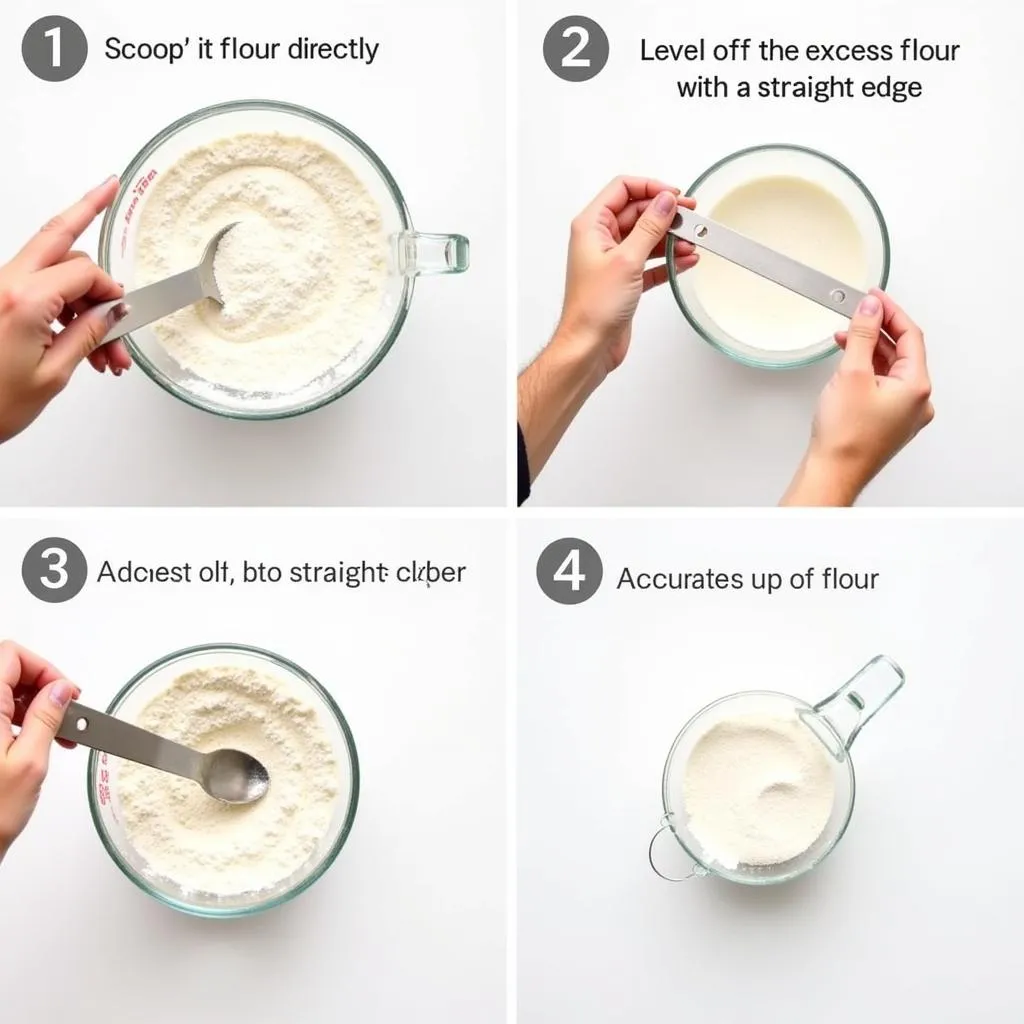When it comes to cooking and baking, precision is key. A slight variation in ingredient quantities can make or break a dish. Understanding the “size of a cup in ml” is crucial for achieving consistent and delicious results in the kitchen. This article aims to clarify this common query, delving into the nuances of cup measurements and their milliliter equivalents.
Cracking the Code: Cups vs. Milliliters
While “cups” offer a convenient measuring unit in many recipes, especially those originating from the United States, they lack the precision of milliliters (ml), the standard unit of volume in the metric system. The “size of a cup in ml” isn’t fixed but varies slightly based on regional standards and the specific ingredient being measured.
The Standard Conversion: Unraveling the Mystery of a Cup
Generally, a standard cup is considered to hold 236.5 ml. However, it’s essential to note this conversion is an approximation. To illustrate:
- Liquids: A cup of water typically measures 237 ml, while a cup of oil might be slightly less.
- Dry Ingredients: The “size of a cup in ml” for dry ingredients like flour or sugar can vary significantly depending on how they are scooped or packed into the cup.
 Measuring Dry Ingredients
Measuring Dry Ingredients
Navigating Different Cup Sizes: Beyond the Standard
Adding to the complexity, several types of cups are used in culinary contexts, each with a slightly different ml equivalent:
- Legal Cup (US): This cup holds 240 ml and is often used in nutritional labeling.
- Metric Cup: Some recipes might use a 250 ml metric cup, simplifying conversions.
- Imperial Cup (UK): Slightly larger than the US cup, the imperial cup holds about 284 ml.
Why Precision Matters: Achieving Culinary Success
Understanding these subtle differences in cup sizes and their ml conversions is crucial for several reasons:
- Recipe Consistency: Using the correct cup measurement ensures your dishes turn out as intended, maintaining the desired texture and flavor balance.
- International Recipes: Converting cups to milliliters is essential when following recipes from different regions or cultures using the metric system.
- Dietary Considerations: For individuals with specific dietary needs, accurate measurement is vital for tracking calorie and nutrient intake.
Tips for Accurate Measurement:
- Invest in Measuring Tools: A set of measuring cups and spoons, preferably with both cup and ml markings, is essential for any kitchen.
- Level Off Dry Ingredients: When measuring dry ingredients, avoid scooping directly from the bag. Instead, spoon the ingredient into the cup and level it off with a straight edge, like a knife or spatula.
- Use Liquid Measuring Cups: For liquids, use a dedicated liquid measuring cup with a spout for easy pouring and accurate readings.
- Double-Check Conversions: If a recipe uses cups and you prefer working with milliliters, always double-check the conversion to ensure accuracy.
Conclusion
While the “size of a cup in ml” might seem like a simple question, it opens up a world of nuances in kitchen measurements. By understanding the standard conversions, recognizing the variations between cup types, and employing accurate measuring techniques, you can elevate your culinary skills and ensure consistent, delicious results every time you step into the kitchen.
